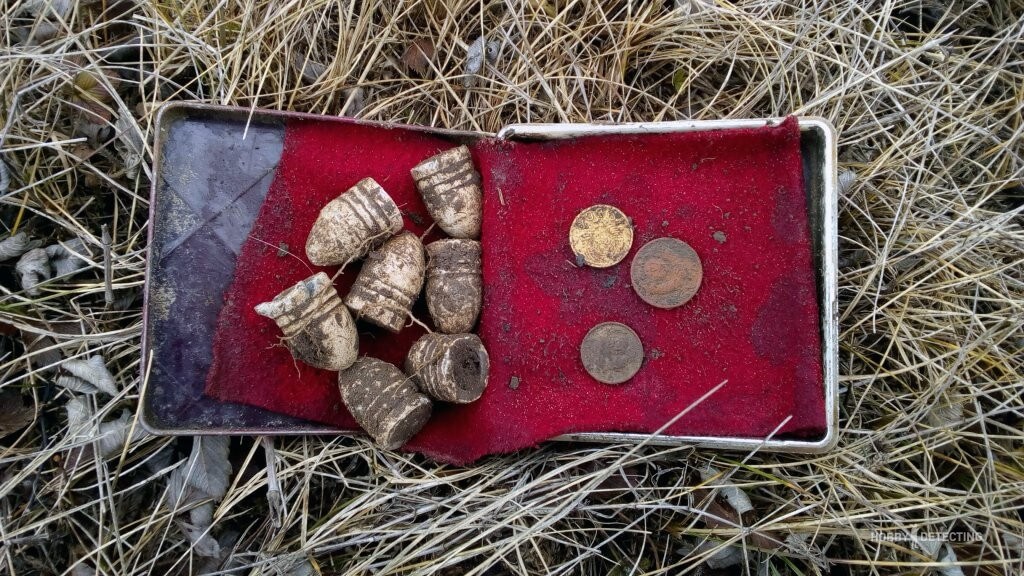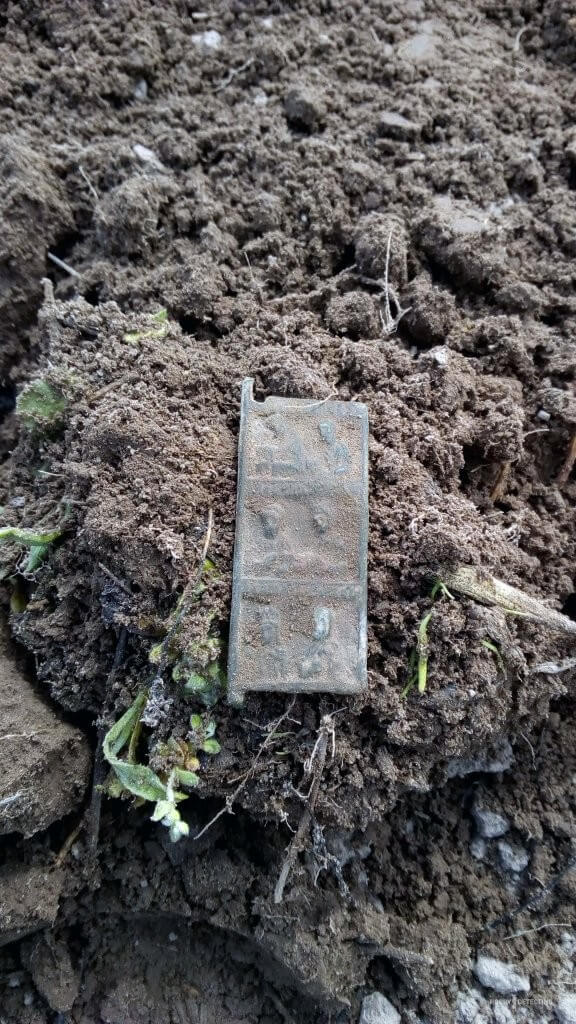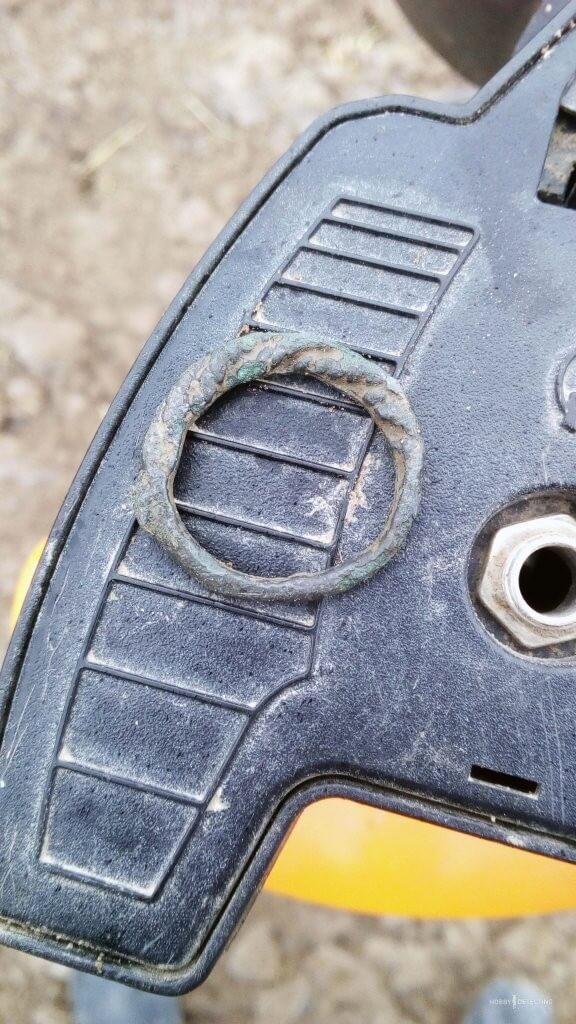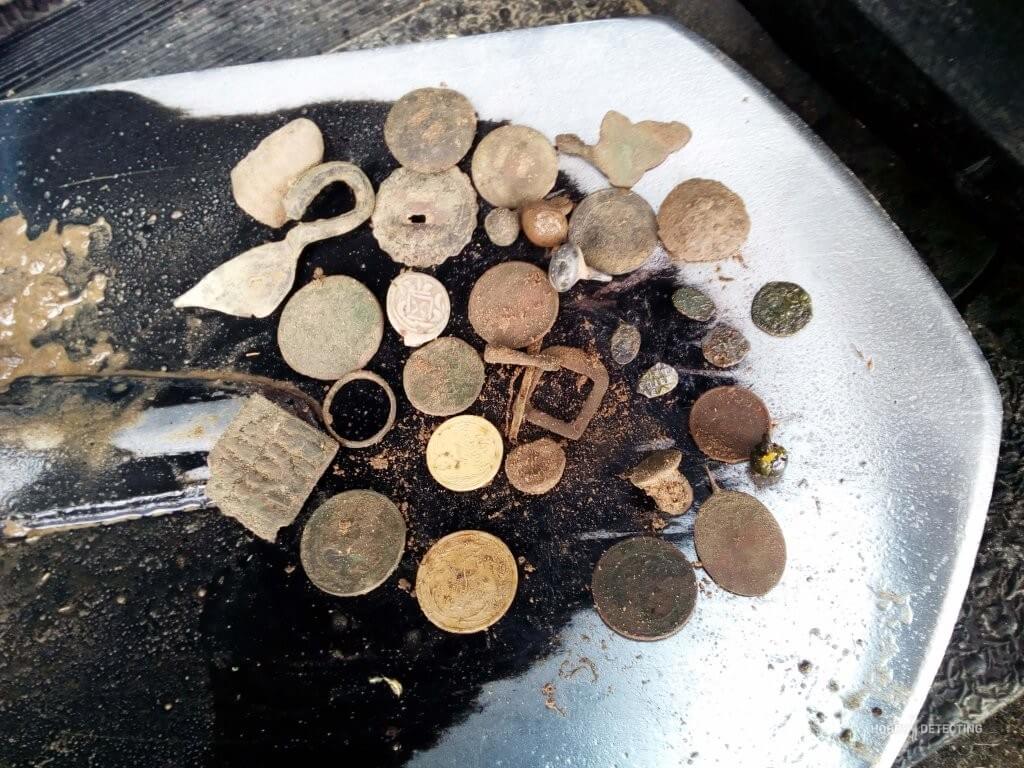Soputka, what is it, or how to identify a swag place?
Very often in the vocabulary of top bloggers, and not very top ones, and sometimes not even bloggers at all. When talking with comrades you meet on the field, you can hear a phrase like “At first, in that place, a good companion went” or “The sopuka was there, but he never brought up any good finds.” So, what is this – a companion? And why is it important to understand those items that an inexperienced digger may mistake for garbage?


Here is a good example of a good companion. Most diggers will only see bent copper wire here. I identified part of a female temple decoration from the 15th to 19th centuries.
A modern cop is tens of kilometers traveled over the weekend in search of places that have not yet been beaten or missed by less experienced comrades. In my practice, there was a very interesting forest clearing with traces of the digging of predecessors. Two holes from last year, swollen from melted snow. So, the comrade and I in that clearing dug the forest village very well and successfully. Whereas the diggers who were at this place before us most likely dug up two colored fragments and moved on. Forestry digging is a separate science and we will return to this section later.

Crosses and other religion.
Let's start from simple to complex. The first sign of a good place to dig is crosses on the body or their sad fragments. Moreover, there are often such fragments of crosses, when you see them, you understand that it would have been better not to have found them. So, in the first year of my passion for instrumental search, I was sure that the main sign of a good place for digging was coins, only coins and exclusively coins. Therefore, when I accidentally found an unbroken village in a once plowed field, I was scared. In response to ten color signals, crosses and fragments of crosses were dug up in nine cases.

I often hear stories from diggers that they found many crosses in one place or another. And, often, comrades compared this fact with the fact that fist fights could take place there. Not entirely correct. You need to understand that our ancestors had more than one, or even two crosses in their “wardrobe”. Until the 19th century, when the general church unification of pectoral crosses began, an ordinary serf peasant could have up to a dozen pectoral crosses. So to speak, for all occasions. It all depended on what prayer was on the back. For example, “may God rise again” is a prayer to protect against the undead. There were also expensive crosses worn on major church holidays. And so on, on, on.

Crosses were lost very often and in very large quantities. There were no nylon laces then; they used either woolen thread or leather lace. Remnants of laces can often be seen in the eye of the cross. Copper has very good preservative properties. Of course, crosses could also be lost in the field during work, but it should not be ruled out that where there is a wide field today, in the past there could have been a single-yard or a full-fledged settlement of up to 10 households.

Rings, spindle whorls, household items.
Everything is just as simple here. If, once upon a time, there was a settlement in one field or another, then household items were also lost during their use. Once I was walking through an empty field, digging through wire and plugs, and then there was a signal, a piece of lead in a simple circle shape with a hole. Yeah, and this is a whorl, you need to comb this tubercle more carefully. And there came signals, a fragment of a woman’s ring, a piece of a copper comb, and then the scales began to plow. By the way, it was a very interesting village, there were a lot of scales and other accompaniments, but there were practically no crosses. More precisely, there were only two, but which ones.

Conclusion.
In general, based on personal experience, I can say that it also happens when in one field only coins with a small number of crosses and other accompanying items are dug, while in the next field 90% of all finds are precisely associated. There is such a thing that in one field in a day I could dig up to a dozen buttons, both uniform and caftan, while in another field I dug no more than a dozen buttons for the entire season. I have no idea what this is connected with, I only know one thing. If, while scouting a new field, two or three colored targets of pre-20th century origin have been dug up in a short time, then the site deserves attention for a more thorough inspection. It is possible that this is just the edge of a very interesting and swag place.


